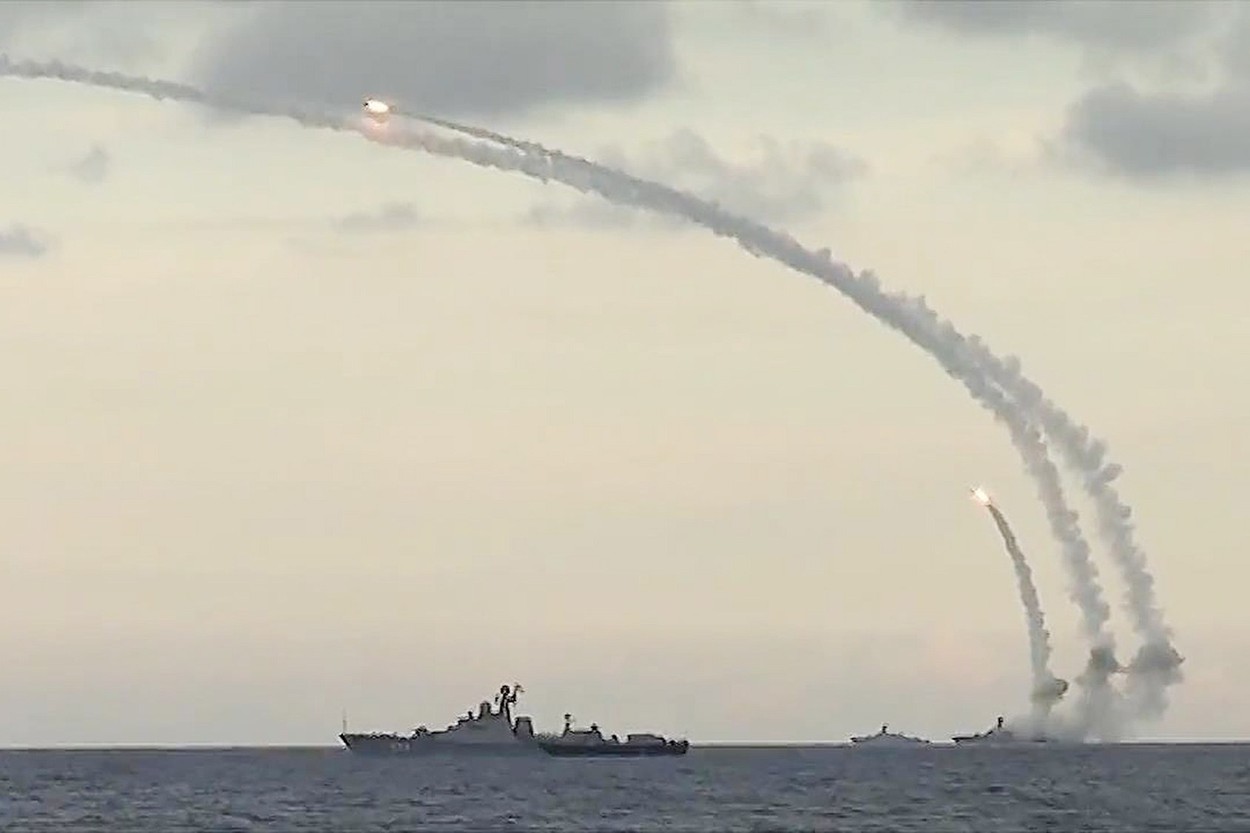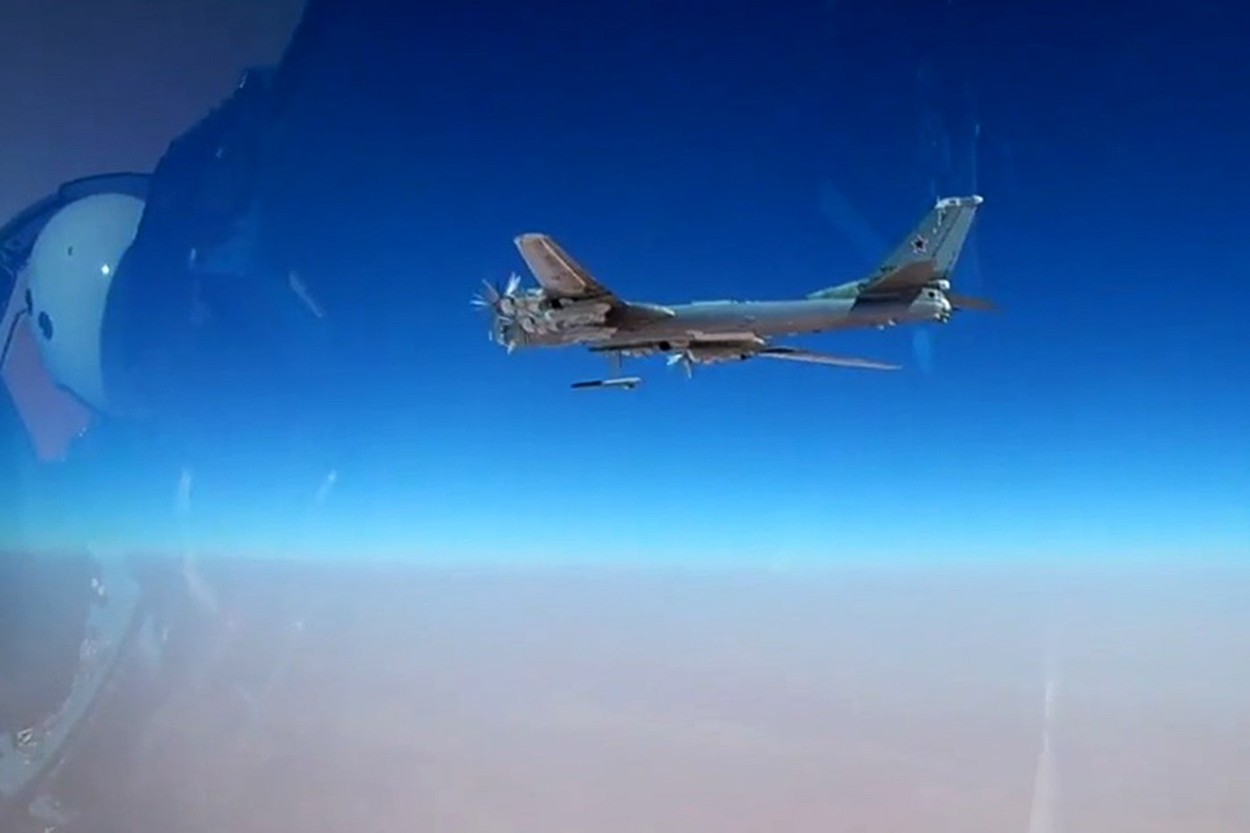
Russia may launch repeated massive missile strikes on Ukraine within nine months, Estonian intelligence chief Margo Grosberg said on Friday, Kyiv Independent reports.
According to Grosberg, Russia still has between 830 and 1,250 precision missiles out of a stockpile of 2,500 missiles it had before a full-scale invasion. In addition, Russia continued to produce missiles throughout the invasion, despite international sanctions that prohibit the export of the technical components required for production.
Grosberg noted that according to the most optimistic estimates of the Estonian special services, Russia may continue the massive missile attack on Ukraine for another 3-4 months. According to the most pessimistic estimates, repeated attacks can last 6-9 months.
Since October 10, Russia has been carrying out large-scale coordinated missile attacks on critical infrastructure facilities in Ukraine. Having launched dozens of missiles at once, by the end of January, Russia had carried out more than 10 such attacks.
As a result of this campaign, dozens of civilians were killed and serious damage was caused to Ukraine’s energy system, resulting in blackouts of electricity, water and heating.
According to the Commander-in-Chief of the Armed Forces of Ukraine Valery Zaluzhny, during the last massive attack on Ukraine on January 26, Russia fired 55 missiles from planes and ships stationed in the Black Sea. Of them, the Air Defense Forces of Ukraine shot down 47, Zaluzhny reported.
Russia has recognized that Ukraine’s energy infrastructure is one of its main goals. Under the Geneva Conventions, an attack on vital public infrastructure is a war crime.
Putin: Russia produces as many anti-aircraft missiles as the entire world combined
Russia produces as many anti-aircraft missiles as the rest of the world combined, President Vladimir Putin said in response to reports of a shortage of ammunition in the Russian army, EFE news agency reported.
In terms of anti-aircraft defense of various classes, Russian production is comparable to the world,” Putin said during a meeting in the Kremlin with the governor of the Belgorod region, located on the border with Ukraine, which has become the target of the majority, Vyacheslav Gladkov. attacks since the start of the Russian invasion 11 months ago.
What did Ukraine say?
Russia has “enough” stockpiles of missiles for three or four more large-scale strikes on Ukraine, but then it will be “completely without missiles,” said Oleksiy Danilov, Secretary of the NSDC, last December. interview with “Ukrainian Pravda”, quoted by The Kyiv Independent.
Russia has “enough” S-300 missiles in its arsenal to continue striking Ukrainian cities, Danilov told Ukrainian Pravda.
In November, Ukrainian Defense Minister Oleksiy Reznikov said that Russia had used most of its arsenal of precision missiles to attack Ukraine.
According to Reznikov, Moscow had 119 Iskander missiles in stock at the time, compared to 900 before the full-scale invasion of Ukraine began, and 229 Kalibr cruise missiles, compared to 500 on February 23.
What missiles does Russia launch over Ukraine? From Kalibr cruise missiles to the dreaded Iskander.
Russia has a wide range of cruise and ballistic missiles that it has used to attack Ukraine, its cities, military and civilian targets, and has already started firing missiles at Kiev and other strategic targets shortly after President Vladimir Putin announced that he authorized a “military attack.” operations” in a neighboring country.
In recent years, the Russian military has focused on developing missile attack capabilities as part of President Vladimir Putin’s program to re-establish Russia as a world leader in this field. But the missiles currently being launched over Ukraine were most likely developed in the 1990s and 2000s, and some of them are modernized versions of Soviet systems.
Caliber 3M14 (SS-N-30A)
The 3M14 Kalibr missile (NATO designation SS-N-30A) is a surface-to-surface cruise missile that has become a mainstay of the Russian Navy in recent years.
Although commonly referred to in the press as simply the Caliber, the SS-N-30A is actually just one missile in a larger Caliber family of sea-to-surface weapons, which includes the SS-N-27 (“Sizzler”) . anti-ship missile) and anti-submarine missile 91R.
All 3 Kalibr missiles use the same vertical launch system, which is becoming the norm for the Russian Navy.
3M14 “Caliber” missiles can be launched from a warship or submarine and, having a range of 1,500-2,500 kilometers, can hit Kyiv directly from the Black Sea.
- class: surface cruise missile

PHOTO: TASS / Profimedia Images
9M729 (SSC-8)
SSC-8 “Vykrutka” is a land-based cruise missile with a flight range of 2,500 kilometers. Its development by Russia prompted the US to withdraw from the Intermediate-Range Nuclear Forces Treaty in 2018.
Russia began secret development of the SSC-8 missile in the mid-2000s and conducted its first flight tests in 2008. The first test to hit the target took place in 2014, the second – in September 2015.
In November 2018, the United States Intelligence Community noted:
“Russia initially tested the 9М729 land-based missile at a distance of more than 500 kilometers from a stationary platform. Russia then tested the same missile at a distance of less than 500 kilometers from a mobile launcher. By joining these two tests, Russia managed to develop an intermediate-range missile, prohibited by the INF Treaty, which is launched from a mobile platform on the ground.”

PHOTO: Bai Queqi / Avalon / Profimedia Images
In February 2017, US officials reported that Russia had deployed two SSC-8 missile divisions to the Kaputsyn Yar battalion in southwestern Russia, although one had been moved to an undisclosed location. Each battalion consists of 4 launchers and each launcher has about 6 missiles.
- Class: land-based cruise missile
X-101
It is a stealthy air-to-surface cruise missile that was designed to evade air defense systems by flying at low altitudes close to the ground to avoid radar systems.
Its accuracy is believed to be quite high using the GLONASS electronic satellite navigation system (the Russian equivalent of GPS) and remote guidance with a range of 2,500-2,800 kilometers.

PHOTO: TASS / Profimedia Images
Development of the X-101 began in the late 1980s and was accelerated in 1995. The Kh-101 passed the first successful tests in August 2003 and entered service with the Russian Air Force in 2012.
Over the past 10 years, Russia has used the X-101 in several attacks on Islamic State positions in Syria as part of its efforts to support the regime of President Bashar al-Assad.
- class: air-to-ground missile.
X-55 (AS-15 “Kent”)
The Kh-55 is an air-to-surface cruise missile that began development in the Soviet Union in 1971. Initially, the Kh-55 was developed as a strategic system capable of carrying a nuclear warhead at a distance of up to 2,500 kilometers, but was later modified. in several different variants also carry conventional warheads.
Its cylindrical fuselage is very similar to the famous American Tomahawk missiles. They are almost identical in diameter.
The Russian missile, which NATO has named the AS-15 Kent, uses a TERCOM navigation system with an accuracy of up to 25 meters.
- Class: subsonic cruise missile
9K720 Iskander (SS-26 “Kamen”)
“Iskander” is a short-range mobile ballistic missile complex capable of hitting targets at a distance of up to 500 kilometers. Using the TEL launcher and support facilities, the system can also launch cruise missiles.
In 2019, Russia had 12 Iskander-M combat brigades, each consisting of 12 launchers and associated support vehicles.
The Russian armed forces first used Iskander missiles during the 2008 invasion of Georgia. The Kremlin also sent a unit to Syria in 2016, but it was not used.
Russia also regularly sends Iskander systems to the Kaliningrad enclave, from where they can strike NATO forces in Poland and the Baltic states, as well as Finland and Sweden, which it threatened on Friday with “serious military consequences” if they tried to join North Atlantic Alliance.
The Russian armed forces also sent Iskander complexes to Belarus for “military exercises”, which became the reason for the invasion of Ukraine from the north.
- class: short-range ballistic missile
Source: Independent Kyiv,The Moscow Times, Missile Threat – CSIS Missile Defense Project, HotNews.ro
Follow the latest events of the 338th day of the war in Ukraine LIVETEXT on HOTNEWS.RO.
Source: Hot News
James Springer is a renowned author and opinion writer, known for his bold and thought-provoking articles on a wide range of topics. He currently works as a writer at 247 news reel, where he uses his unique voice and sharp wit to offer fresh perspectives on current events. His articles are widely read and shared and has earned him a reputation as a talented and insightful writer.